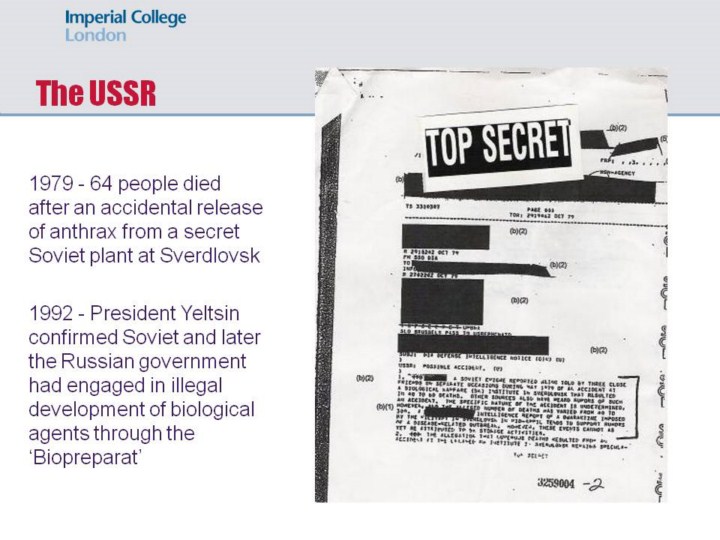| front |1 |2 |3 |4 |5 |6 |7 |8 |9 |10 |11 |12 |13 |14 |15 |16 |17 |18 |review |
 |
In 1969, President Nixon ended the US biological weapons program, confining US research to defensive measures. In 1972, the US, the Soviet Union and more than 100 other nations signed the Biological and Toxin Weapons Convention, prohibiting the possession of deadly agents except for research into defensive measures such as vaccines, detectors and protective clothing (Miller et al., 2001). Yet in May 1992, President Yeltsin confirmed that the Soviet Union and later the Russian government had engaged in illegal development of biological agents through the nominally civilian secret biological weapons facilities of the ‘Biopreparat’ (Stern, 1999). One of these secret biological weapons facilities near the Soviet city of Sverdlovsk was the source of an accidental emission of a plume of aerosolized anthrax in April 1979, which led to the reported deaths of 64 people (Guillemin, 1999).
|